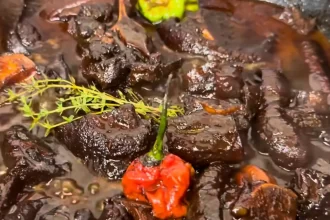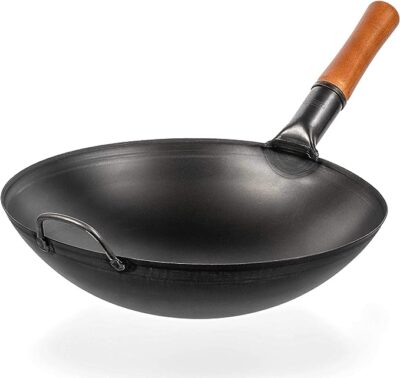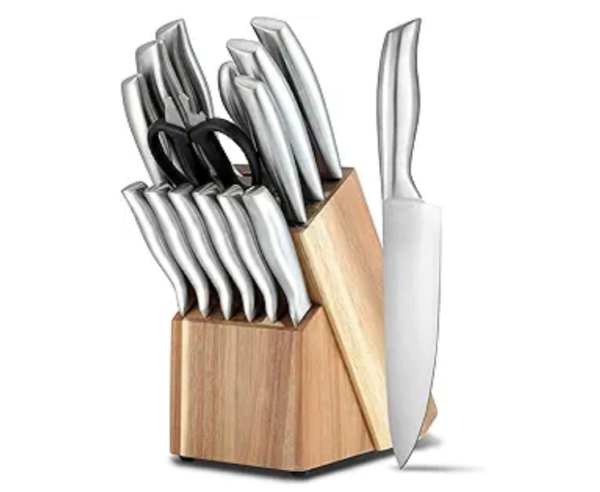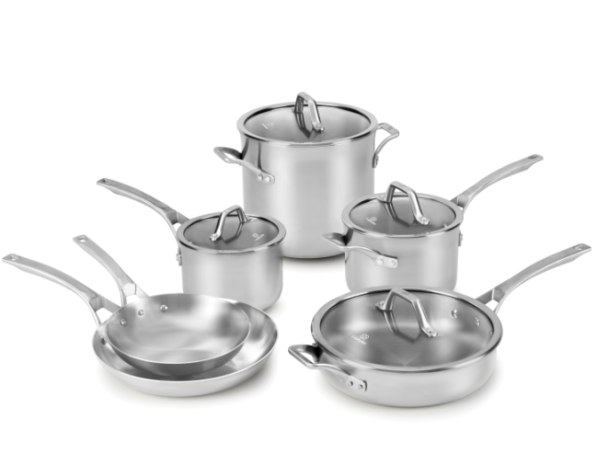A cast iron skillet is a versatile, durable, and essential tool that every home chef should have in their kitchen. From its even heat distribution to its natural nonstick properties, a cast iron skillet offers numerous benefits that make it perfect for a wide range of cooking tasks. Here’s why you need a cast iron skillet in your kitchen, along with what to consider when purchasing one.
Explore Our Affiliate Picks:
- Contact us at [email protected]
Benefits of a Cast Iron Skillet:
Even Heat Distribution: Cast iron is known for its excellent heat retention and distribution properties. Once heated, it maintains a steady and even temperature, ensuring that your food cooks evenly without hot spots.
Versatility: A cast iron skillet can be used for a variety of cooking methods, including frying, sautéing, searing, baking, and even grilling. From frying eggs to baking cornbread to searing steaks, the possibilities are endless with a cast iron skillet.
Natural Nonstick Properties: When properly seasoned, a cast iron skillet develops a naturally nonstick surface that makes cooking and cleaning a breeze. This seasoned surface becomes more nonstick over time, allowing you to cook with minimal oil and easily release food from the pan.
Durability: Cast iron skillets are built to last a lifetime and beyond. Unlike other cookware materials that may warp, chip, or wear out over time, cast iron is virtually indestructible and can withstand high heat, heavy use, and even outdoor cooking.
Health Benefits: Cooking with cast iron can also offer health benefits. When used regularly, it can add small amounts of iron to your food, which can help prevent iron deficiency anemia, especially in individuals with iron deficiencies.
What to Consider When Purchasing a Cast Iron Skillet:
Size: Cast iron skillets come in various sizes, ranging from small individual skillets to large family-sized pans. Consider your cooking needs and the amount of food you typically prepare to determine the right size for your kitchen.
Pre-Seasoned vs. Unseasoned: Some cast iron skillets come pre-seasoned with a thin layer of oil, while others are unseasoned and require seasoning before use. Pre-seasoned skillets offer convenience but may still benefit from additional seasoning to enhance their nonstick properties.
Handle Design: Look for a cast iron skillet with a sturdy and ergonomic handle that provides a comfortable grip and allows for easy maneuverability. A helper handle on larger skillets can also be helpful for lifting and pouring.
Price: Cast iron skillets are available at various price points, depending on the brand, size, and quality. While it’s tempting to opt for a budget-friendly option, investing in a high-quality cast iron skillet from a reputable brand is worth the long-term durability and performance it offers.
Maintenance: Consider the maintenance requirements of the skillet, including cleaning, seasoning, and storage. Cast iron requires proper care to maintain its nonstick surface and prevent rust, so choose a skillet that fits into your lifestyle and cooking routine.
How to Season a Cast Iron Skillet:
Seasoning a cast iron skillet is essential for creating a non-stick surface and protecting it from rust. Whether you’re seasoning a brand-new skillet or restoring an old one, follow these steps to achieve the perfect seasoning:
1. Clean the Skillet
Start by washing the skillet with warm water and mild dish soap to remove any dirt, debris, or factory residue. Use a sponge or stiff brush to scrub the skillet thoroughly, but avoid using harsh abrasives that could damage the surface.
2. Dry Thoroughly
Once the skillet is clean, rinse it thoroughly with water and then dry it completely using a clean towel or paper towels. Make sure to remove all traces of moisture from the skillet to prevent rusting.
3. Apply Oil
Using a paper towel or clean cloth, apply a thin, even layer of cooking oil to the entire surface of the skillet, including the inside, outside, and handle. Common oils used for seasoning cast iron include vegetable oil, canola oil, or flaxseed oil. Be sure to use an oil with a high smoke point to prevent it from burning during the seasoning process.
4. Remove Excess Oil
After applying the oil, use a fresh paper towel or cloth to wipe off any excess oil from the skillet. The goal is to leave behind a very thin, almost invisible layer of oil that will polymerize and form the non-stick coating.
5. Bake the Skillet
Preheat your oven to a temperature between 350°F and 400°F (175°C to 200°C). Place the skillet upside down on the middle rack of the oven to allow any excess oil to drip off. You may want to place a sheet of aluminum foil on the bottom rack to catch any drips.
6. Bake for One Hour
Bake the skillet for one hour to allow the oil to polymerize and create a smooth, non-stick surface. Some people recommend repeating this process multiple times to build up a thicker seasoning layer, but one round of seasoning is usually sufficient for most skillets.
7. Cool and Store
After one hour, turn off the oven and allow the skillet to cool completely before removing it. Once cool, your cast iron skillet is ready to use! Store it in a dry place to prevent rusting, and avoid washing it with soap or scrubbing it with abrasive materials, as this can damage the seasoning.








